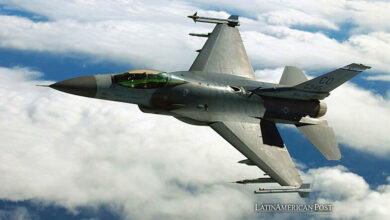Brief history of scoreboards in soccer stadiums
We tell you the story of the scoreboard in soccer, without which it would not be so exciting .

Thus was born the scoreboard that we see in football stadiums. / Photo: Unsplash
LatinAmerican Post | Hugo Martínez
Listen to this article
Leer en español: Breve historia de los tableros indicadores en los estadios de fútbol
One of the peculiarities of the organization of soccer championships was that almost all matches were played on Sundays at the same time. The supporters of a certain team attended their stadium with the need to know the results of the other fields. There was no portable radio to report it so there was only an indicator sign that moved the results instantly.
The prehistory of the soccer board
In the prehistoric times of the sport there were not even telephones to find out. In 1915, the River Plate field in Buenos Aires had an indicator poster showing the results of the games played several kilometers away. Next to the stadium there was a dovecote. The chroniclers carried in their baskets several copies of carrier pigeons. When a goal was produced, they attached the information to one of their legs and launched a specimen that flew quickly to their loft. The principle was applied that a carrier pigeon, no matter how far away it was, was always oriented to return to its loft. Information appeared remarkably quickly on the board.
The supporters of Gimnasia y Esgrima de La Plata, for example, when their team played in San Isidro (80 kilometers away), they would gather in a square and send one of their supporters with several pigeons. When they saw one of them return, they found out about the incidents of the game. They yelled a goal as if they had been watching it on the court. And they were disappointed if the rival was the one who had converted.
When soccer turned professional, the “Alumni” posters were installed. The teams appeared not with their names but with letters. The viewer had to acquire the magazine "Alumni" in order to decode the board. A match between Racing and Tigre, for example, looked like this: X 0-F 1.
Those responsible for updating the dashboard had a telephone line to know the variation in the results.
Also read: 5 disappointing signings in football history
Board modernization
Transistor radios, which appeared around 1960, made these indicator boards anachronistic. The funny thing is that in 1963 the magazine accepted double-page advertising for Tonomac portable radios. The medium accepted an advertising investment from its own executioner: the “Alumni” magazine languished until it disappeared completely in 1968.
Today television has distorted game schedules. The viewer has no need to consult other results. Now the posters are more dynamic and show the most important plays of the game that is played in that stadium.
The extraordinary phenomenon that should be studied is the behavior of the viewer who does not reach his own perception and therefore seeks other informational stimuli to update himself. Certainly the television image is more precise in the details and brings the viewer closer to the pitch itself.
Nostalgic people remember that glance at the signposts, which warned with an auditory caller the variation of some result. It was a different way of palpitating the championship march. If the own team was winning, it was a greater joy to know that the closest rival in the standings tied or lost on another court.




